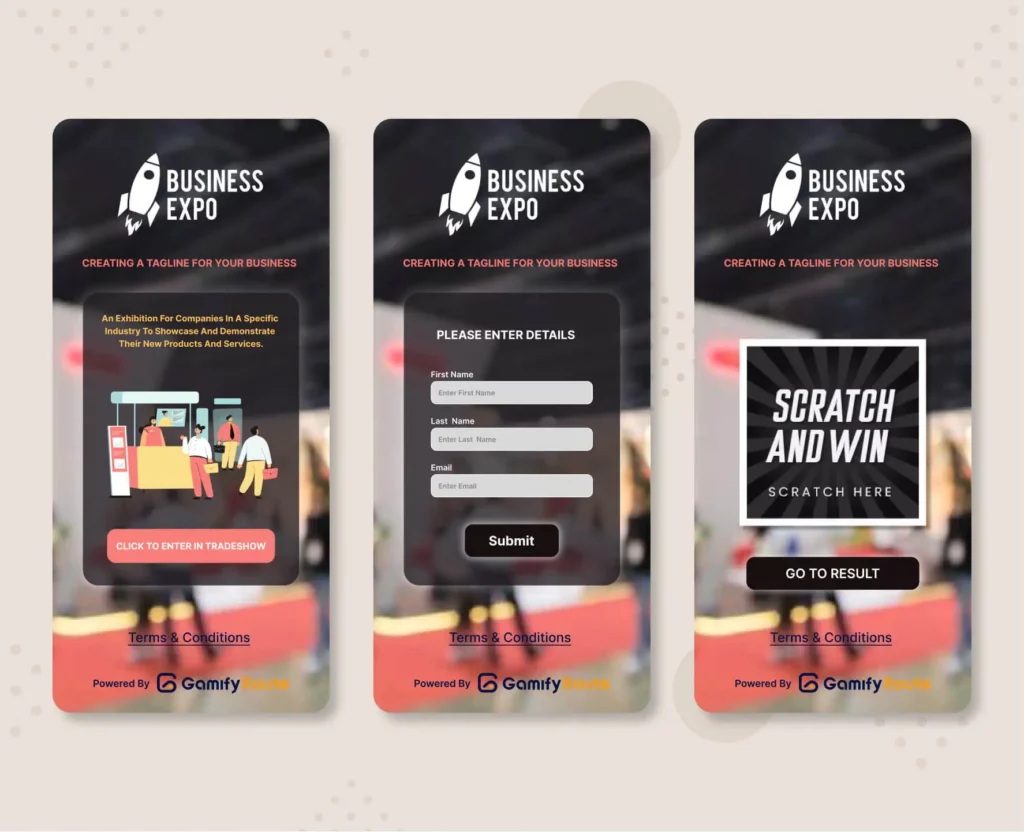Tradeshows have become an essential marketing tool for businesses looking to showcase their brands, products, and services to a large audience. While there are several ways to attract attendees to your booth, scratch-off games have increasingly become a popular choice.
These games are interactive, engaging, and offer a chance for participants to win prizes, making them an effective strategy to increase foot traffic and generate leads. As a result, the use of scratch-off games has become more prevalent in tradeshows, with businesses incorporating them in their marketing plans to gain a competitive edge.
The idea behind scratch-off games is simple: participants scratch off a designated area on a card to reveal a hidden message or prize. This element of chance and surprise piques the interest of attendees and encourages them to visit exhibitor booths, where they can learn more about the brand and its offerings.
Furthermore, scratch-off games provide a unique opportunity for businesses to collect valuable data from attendees, such as email addresses and phone numbers.
Major problems occur in Tradeshow Scratch-off Games
Major problems occur in Tradeshow Scratch-off Games, primarily due to the lack of proper planning and execution. Some of the most common issues include inaccurate prize distribution, improper security measures, and inadequate tracking of ticket sales.
The inaccurate prize distribution can lead to dissatisfaction among the winners and tarnish the reputation of the company. Improper security measures can result in ticket fraud and loss of revenue for the organizers.
Additionally, inadequate tracking of ticket sales can lead to discrepancies in revenue calculation, causing confusion and mistrust among the participants. Therefore, it is crucial to establish clear guidelines and procedures while conducting Tradeshow Scratch-off Games to ensure a smooth and successful event.
Why is digital gamification helpful for tradeshow scratch-off games?
Digital gamification offers several benefits to tradeshow scratch-off games. Firstly, it enables exhibitors to attract and engage more visitors by making the game more interactive and exciting.
Secondly, it provides exhibitors with valuable data about their visitors, such as their preferences and interests, which can help them tailor their marketing strategies. Thirdly, it offers a cost-effective way to create and manage the game, compared to traditional scratch-off games.
Finally, digital gamification allows exhibitors to offer personalized rewards and incentives to their visitors, such as vouchers or discounts, which can further enhance their experience and encourage them to visit their booth again.
Overall, digital gamification is an effective way to enhance the impact of tradeshow scratch-off games and drive more traffic to exhibitor booths.
QR code that allows people to scan and play your game
Integrating a QR code into your tradeshow scratch-off game can be a game-changer. A QR code allows attendees to scan and play your game in a matter of seconds, increasing engagement and interaction with your brand.
By incorporating this technology, you are creating a seamless user experience that enhances the overall event experience. Moreover, it allows for a more contactless experience, ensuring the health and safety of attendees.
This unique approach to tradeshow games provides an opportunity for attendees to engage with your brand even after the event has ended, as they can continue to play the game and access your website. By utilizing this technology, you are setting your brand apart and creating a memorable experience for attendees.
Finally, make sure your game is visually appealing
It’s important to make sure your game is visually appealing if you want players to enjoy it. A well-designed game will capture players’ attention and keep them engaged.
Make sure your game has a style that players will find appealing and easy to navigate. Use bright colors and interesting graphics to make your game stand out.
People are more likely to play a game that looks fun and inviting.
In general, people are more likely to play a game that looks fun and inviting. This is because, when a game looks like it will be enjoyable, people are more likely to want to play it.
Additionally, if a game looks inviting, it is more likely that people will feel comfortable playing it. Ultimately, these factors increase the chances that people will actually play the game.
You can experience a live demo of our game.

